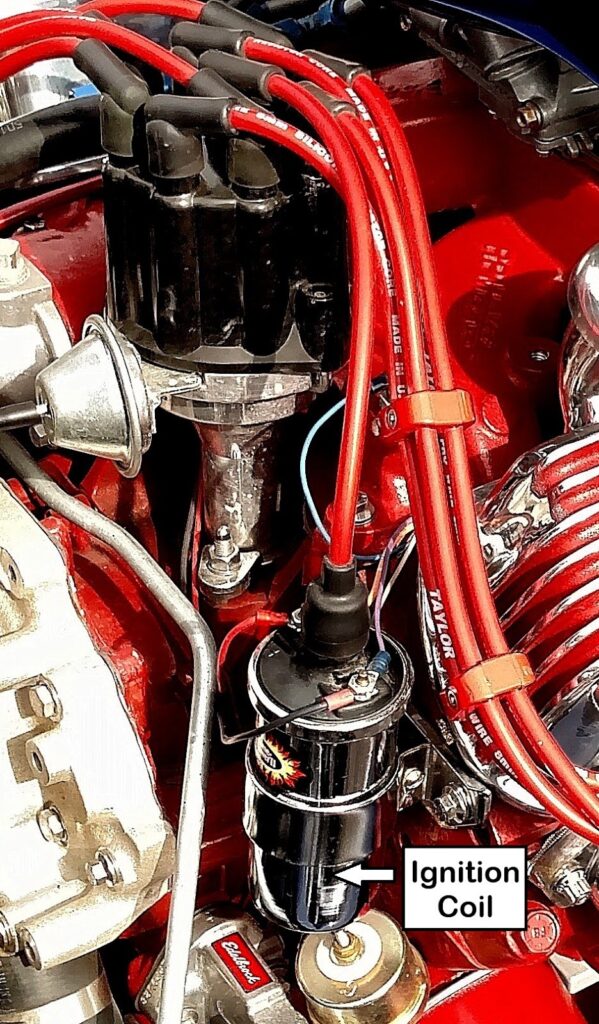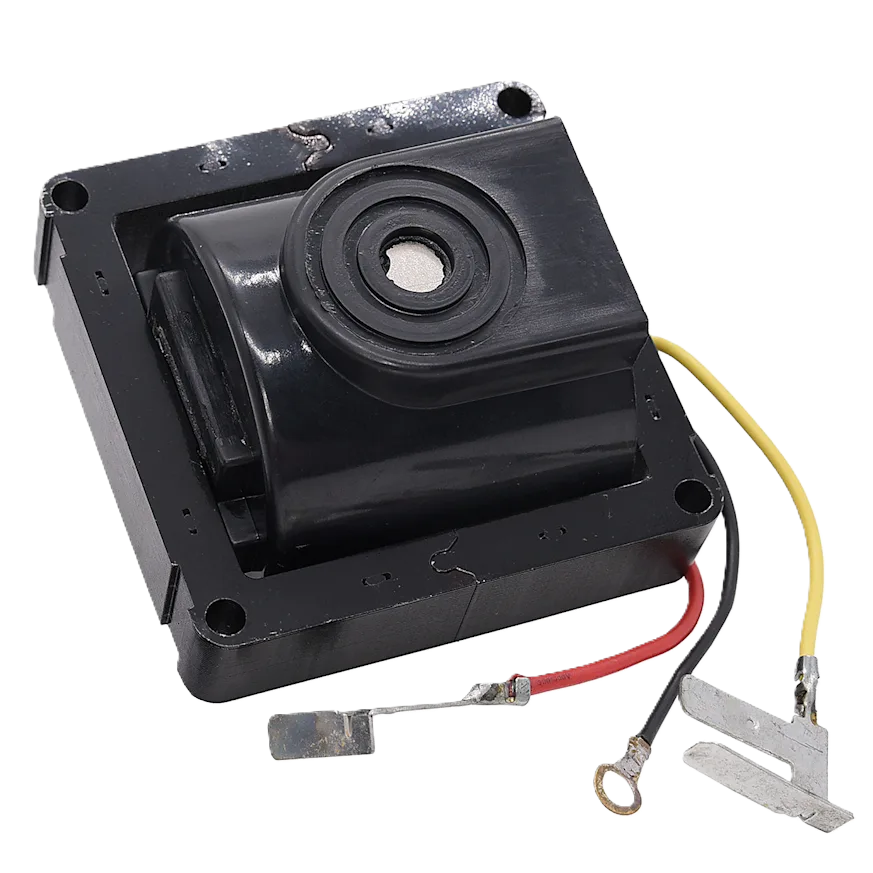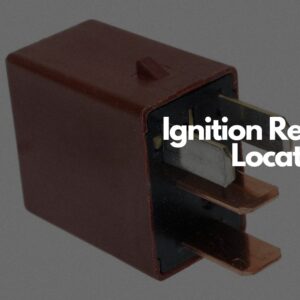The ignition coil’s location depends on the type of ignition system your vehicle has. It may be mounted on the engine, inside the distributor, grouped in a coil pack, or placed directly over the spark plugs. Since these setups vary by make and model, the most reliable way to find the exact location is by checking a shop or an owner’s manual.
There are three basic types of ignition system and subsets among those three.

Coil and distributor ignition will have the coil mounted somewhere on the engine with a single high-voltage lead connected to the center post on the distributor cap.
This type of oil-filled coil was replaced with a potted style E-core coil beginning in the mid 1970s and all the oil-filled coils were gone by the early 1990s.

A subset of this type of coil ignition is the type with the ignition coil mounted in the center of the distributor firing directly to the tab on the rotor (like late ‘70s GM V8s).


Beginning in the mid-1980s, GM started using coil packs, and other vehicle makes followed. Companion plugs are fired by the same coil. A 4-cylinder, for example, would have a pack with 2 coils, and each coil would have 2 towers, one going to each companion plugs (1 and 4 would share the same coil, as would cylinders 2 and 3).

COP coil ignition has a coil mounted right over each spark plug or a coil mounted near each spark plug. On those systems, the PCM can control the ignition timing separately for each cylinder if it needs to based on knock sensor input.

The ignition coil is responsible for transforming battery voltage into the power necessary to ignite the spark plugs. The spark ignites the mixture of air and fuel in the engine, allowing the engine to start and run.
Tips to Access the Ignition Coil
Because the ignition coil is a critical part of the engine, you’ll need to take some necessary precautions to access it safely.
Always park your vehicle on a flat and even surface, preferably somewhere safe and secure like your garage.
Don’t forget to wear safety equipment like gloves before getting to work. Turn off the car and disconnect the battery before tampering with anything in the engine.
If applicable, always label or mark the cables running into the coils so you can tell which order they connect in if ever you need to replace the coils.
Any information provided on this Website is for informational purposes only and is not intended to replace consultation with a professional mechanic. The accuracy and timeliness of the information may change from the time of publication.

































